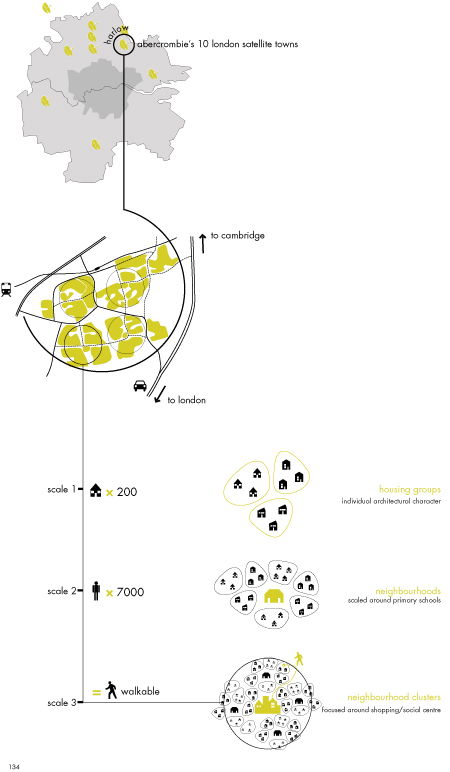Old Orchard Chapter 8 (Summary)
The anticipated growth in London’s population and the desire to encourage industry out of the city influenced the recommendation in Patrick Abercrombie’s 1943 ‘County of London Plan’ to construct 10 satellite towns around London. Harlow was selected as a location for one of the New towns due to the quality of its landscape and it’s excellent road and rail links to London and Cambridge. Harlow New Town was designated in 1947, and in the same year the Harlow Development Corporation was formed, tasked with the supervision of all aspects of the town’s development. The corporation appointed Sir Frederick Gibberd as consultant architect planner and entrusted him with the design of the masterplan and a number of key housing developments. Despite the importance of transport links to London, Harlow was designed to be independent of the capital. It was planned that the New town should have all the resources and amenities required by its inhabitants to allow it to operate autonomously rather than being reliant on London. This policy didn’t just affect the planning of infrastructure but also led to the rule that those applying for housing in Harlow had to work in the town too.
Project: Old Orchard
Location: Harlow new town
Completion: 1962
Client: Harlow Housing Development Corporation
Developer: Laings
Architect: Clifford Culpin and Parters
Typology: 2 types of two storey family houses for sale
No. of dwellings: 60
Density: 15 dwellings/acre
Initial sale price: £5750 sale price of phase 2 dwellings: £230,000 to £425,000

